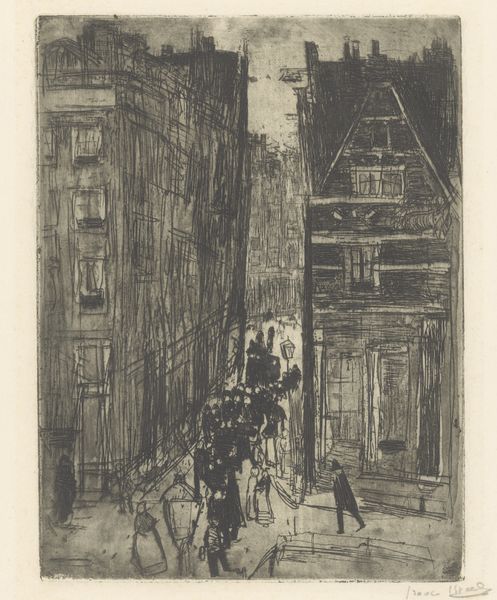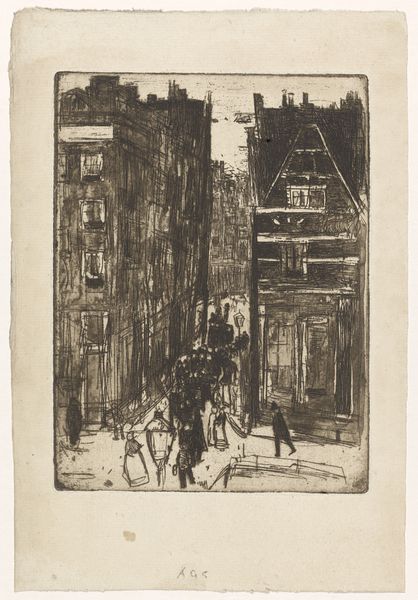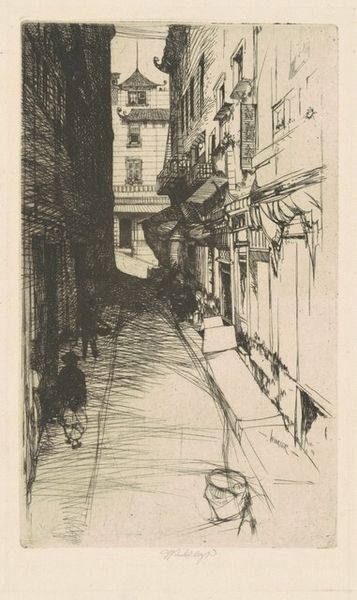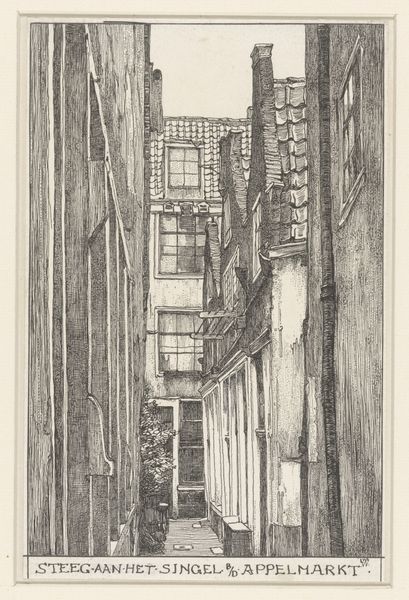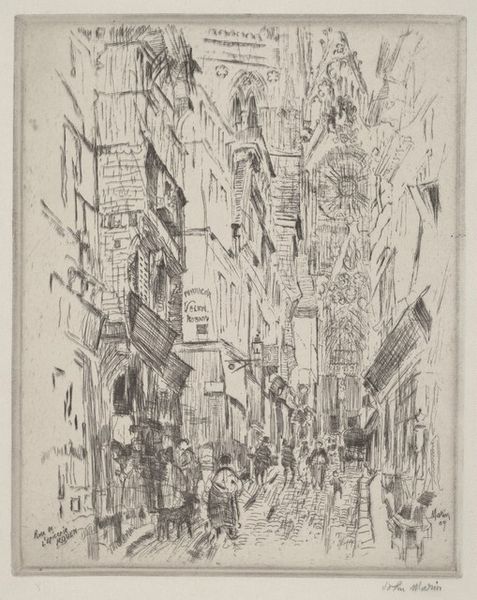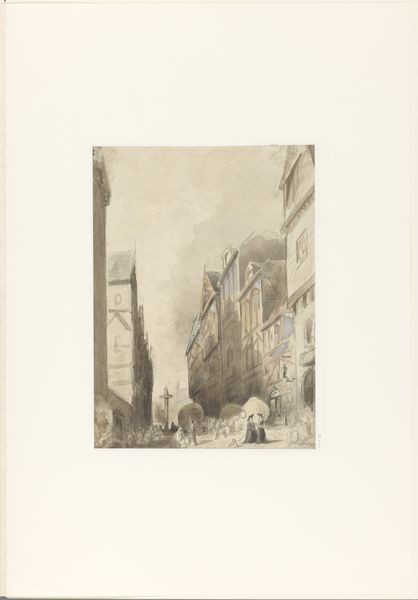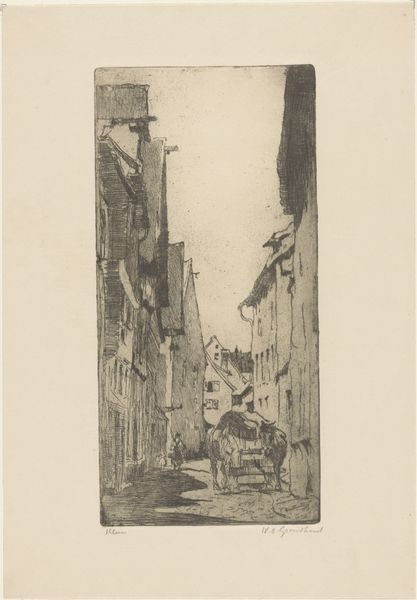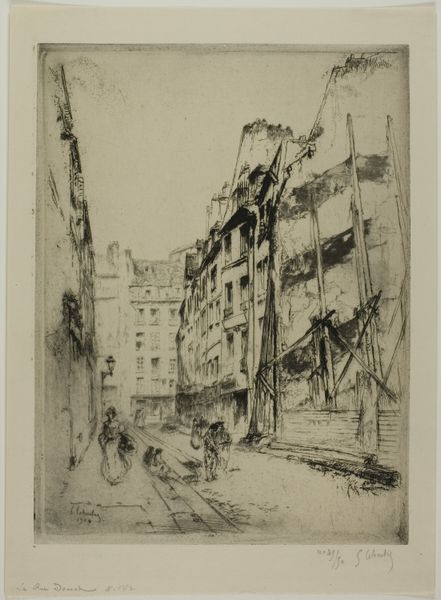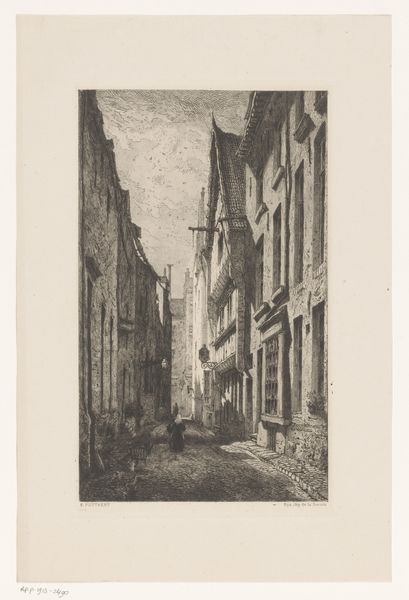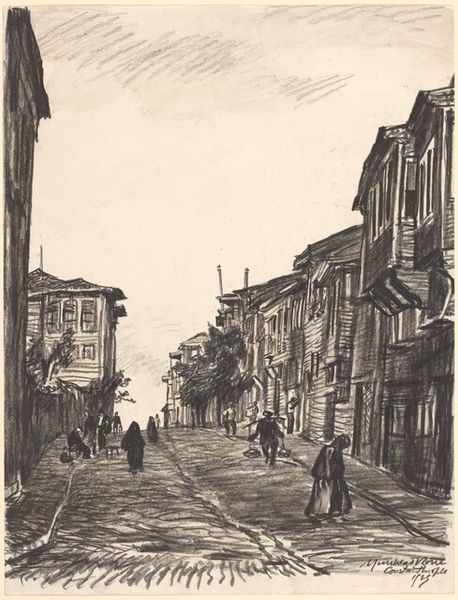
Dimensions: height 202 mm, width 152 mm
Copyright: Rijks Museum: Open Domain
Curator: Looking at this ink drawing, "Gasthuismolensteeg in Amsterdam" by Isaac Israels, made sometime between 1894 and 1968, what immediately strikes you? Editor: Well, it's immediate, isn't it? The dense, almost frantic lines. The sketch-like quality lends an incredible dynamism to the scene. Curator: Yes, the energetic mark-making really captures the bustling life of Amsterdam. It appears to be a spontaneous study, maybe from a personal sketchbook. It begs the question: What sort of pens and ink were available at the time to make such precise yet hasty lines? Also, how were streets in Amsterdam being used during that period and for what commercial and non-commercial activities? Editor: The formal elements contribute heavily to this effect. See how Israels uses hatching and cross-hatching to build form, particularly in the architecture, creating a palpable sense of depth within the narrow street. The strategic use of empty space makes the street crowded and vibrant. Curator: Right. These choices in form represent and shape how public urban spaces were manufactured, experienced, and understood. Notice how Israels highlights the infrastructure present like gas lamps which signal when and how people use the streets as their daily routines change throughout the day. Editor: I'm intrigued by the light. There are so many small, light spots against this dark backdrop, produced by a play between geometric hatching and more whimsical pen strokes. I find that quite fascinating formally. Curator: Exactly. But it's not only the technique; it’s the social context that gives meaning. Think of the rising middle class, whose movement and social behavior shaped streetscapes like this in Amsterdam. It gives form to the materials and provides depth in the artwork. Editor: I appreciate seeing how Israels managed to bring it all to life using lines, hatching, light, and geometry, despite the artwork being so compact. It allows for great emotional impact. Curator: And with this piece, the artist provides insight into the intersection of public and private spaces, social activity, and urban manufacturing of the artwork itself. A rich snapshot of Amsterdam's street culture. Editor: An efficient capture, both historically and structurally.
Comments
No comments
Be the first to comment and join the conversation on the ultimate creative platform.
